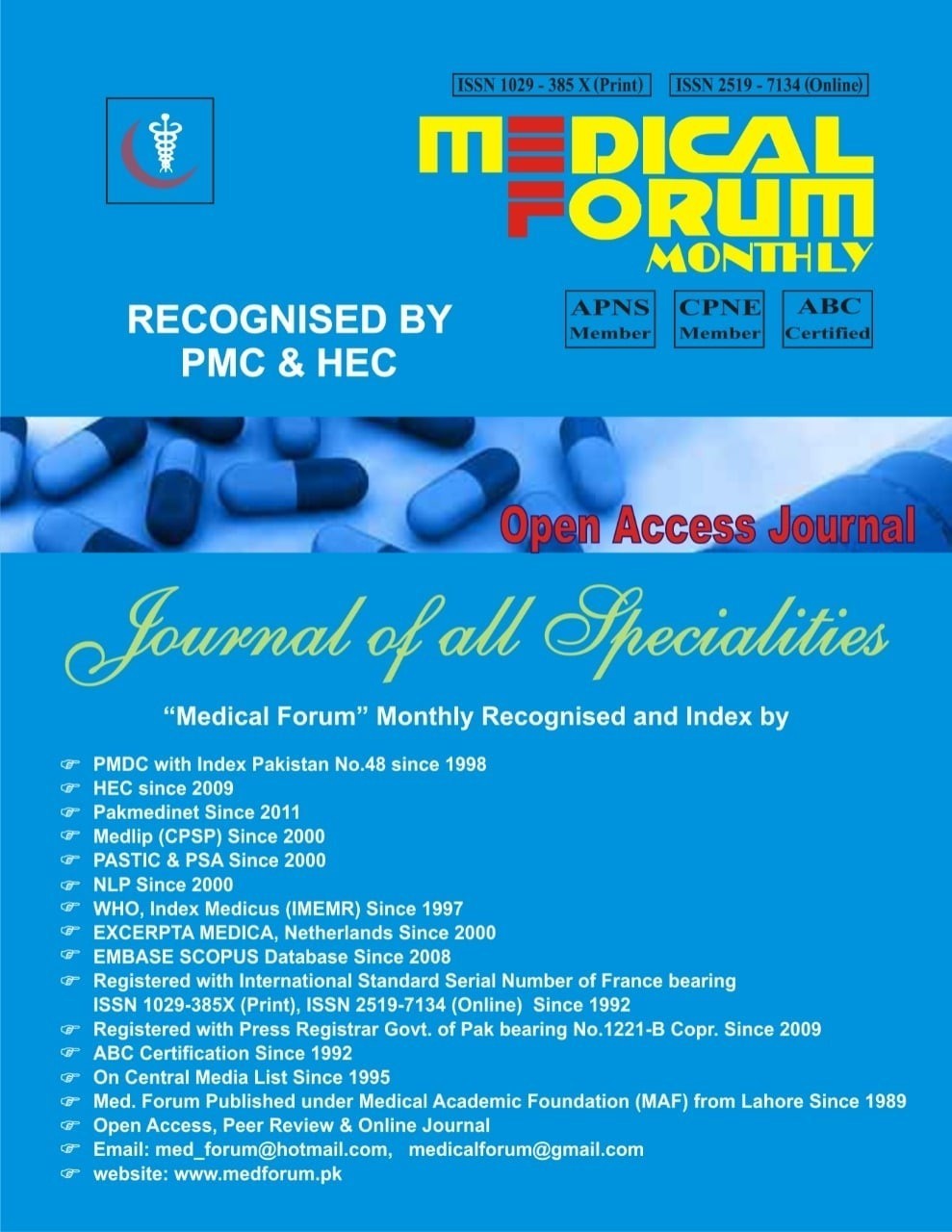
38.Phenotypic Presentation of Oculopharyngeal Muscular Dystrophy
Fahim Ahmed Soomro1, Sajjad Jalbani1, Mukhtiar Lakho1, Ghafoor Magsi1, Vijia Kumar Gemnani2 and Sarmad Jamal Siddiqui2
ABSTRACT
Objective: The purpose of this paper is to present OPMD in Pakistan.
Study Design: Analytic study
Place and Duration of Study: This study was conducted at the Qamber Shahdadkot, recruited through Neurology department CMCH SMBBU Larkana from July 2019 to June 2020 for a period of one and a half year.
Materials and Methods: In a patient manifesting signs of OPMD, we arranged a camp to screen family members and close relatives for characteristic findings of OPMD. The analysis become made on scientific grounds. Demographic characteristics and clinical features were noted in structured proforma. Data analysis was done
using SPSS.
Results: A total of 40 patients were diagnosed with OPMD. The mean age of patients was 27.75±14.27. The demographic presentation is shown in table-1. The mean age of patients when they had first symptoms was 18.85±10.12. 24 (60%) were male and 16 (40%) were female patients. First symptom was ptosis in 29 (72.5%) and dysphagia in 11 (27.5%) patients. Ptosis as the first symptom was seen in 18(62.1%) males and 11(37.9%) females. Dysphagia was the first symptom in 6(54.5%) males and 5(45.5%) female patients with p=.728. Ptosis was the most common symptoms present in 39(97.5%) patients. Ptosis was seen in all female patients included in our study while it was absent in only 1 male patient at the time of presentation with p=1.000. Dysphagia was the second most common symptom found in 32(80%) followed by proximal weakness found in 22(55%) and ophthalmoplegia found in 19(47.5%). Dysphagia was present in 21(65.6%) males and 11(34.4%) female patients with p=.229. Ophthalmoplegia was seen in 11(57.9%) males and 8(42.1%) females with p=0.769. Proximal myopathy was seen in 13(59.1%) males and 9(40.9%) female patients with p=.897. All patients had a positive family history of OPMD.
Conclusion: OPMD in our population has an earlier onset, which may be as early as the first few years of life. The disease is more severe. Common in the male population and about half of the patients present with proximal limb weakness and ophthalmoplegia besides ptosis and dysphagia.
Key Words: Phenotypic, Oculopharyngeal, Muscular, Dystrophy
Citation of article: Soomro FA, Jalbani S, Lakho M, Magsi G, Gemnani VK, Siddiqui SJ. Phenotypic Presentation of Oculopharyngeal Muscular Dystrophy. Med Forum 2021;32(10):172-175.
